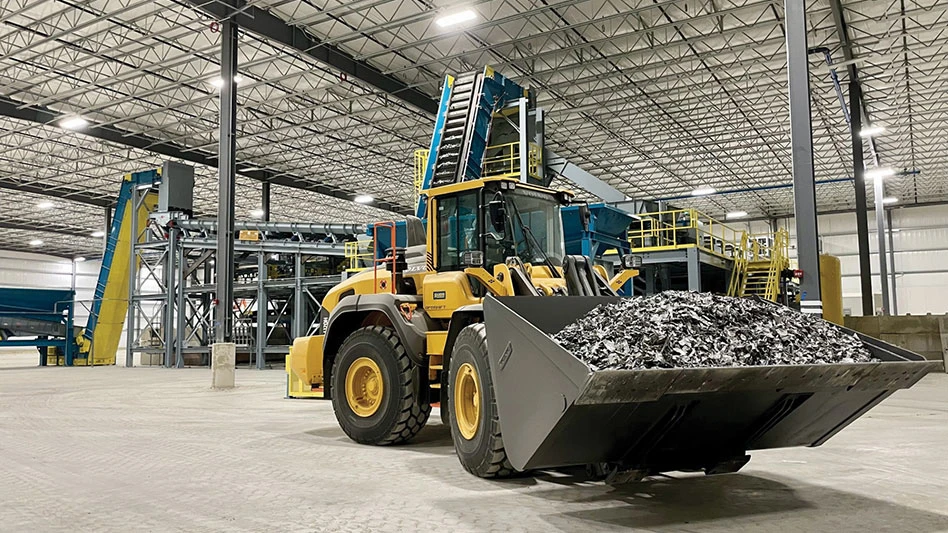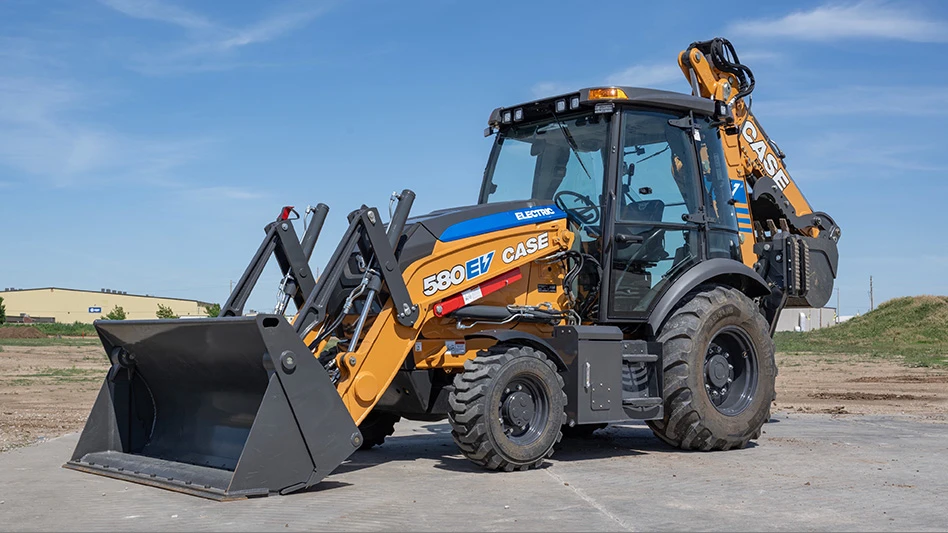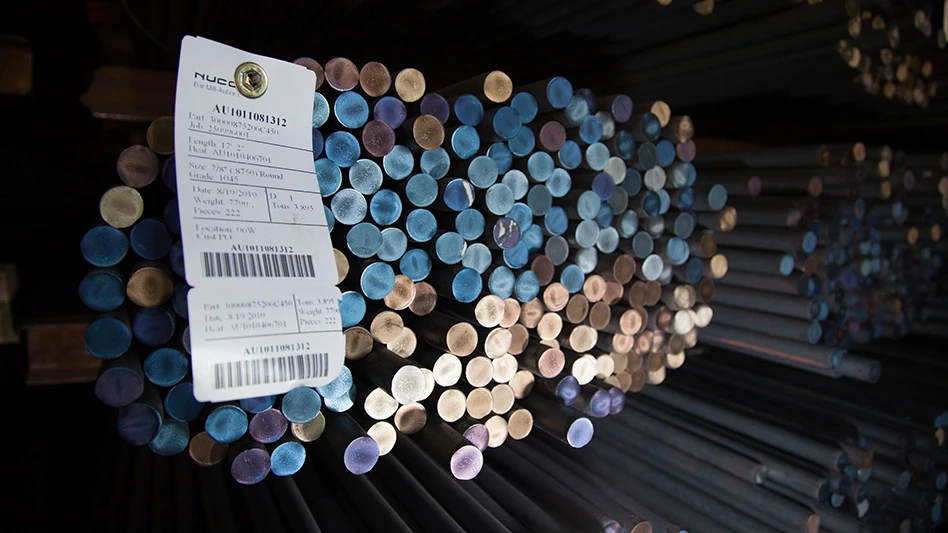Its advocates believe Latin America is on the dawn of a renaissance, both economic and political.
Its detractors worry that the political corruption and fiscal instability that have plagued them throughout this century will continue to hold back nations such as Mexico and Brazil from being considered fully developed economies to match those in North America and western Europe.
The 1990s have shown evidence of both scenarios, but if cross-border trade numbers (and recycling-specific trade numbers) are considered a gauge of economic progress, the region is making its case for being a much bigger factor in the economy of the Western Hemisphere.
NAFTA’S IMPACT
When the North American Free Trade Agreement (NAFTA) was widened to include Mexico, there were numerous critics. In the U.S., concerns about “exporting jobs” to Mexico came from many sources, as did fears of losing a certain amount of autonomy.
Long before NAFTA was ever created, American companies and other multi-nationals began siting manufacturing facilities and assembly plants in Mexico. NAFTA has certainly done nothing to slow down that trend, and affordable labor continues to be an attractive lure to multi-national firms, many of whom locate plants in northern and western Mexico to take advantage of the proximity to American markets and to shipping ports.
Many Americans might be surprised to learn that there have also been factions in Mexico opposed to NAFTA. Some opponents there express concerns for their nation’s autonomy, and fear that Mexico is on a path to becoming subservient to American corporations.
Advocates of the arrangement point to exceptions to that rule, and note that some powerful Mexican companies (such as Grupo Durango in the paper industry) have made purchases on the American side of the border.
International trade has been a source of tension for centuries. In the post-colonial era, many national governments are very sensitive to charges of exposing their nation’s resources and people to exploitation from more powerful nations. In industrial nations such as Canada and the U.S., the reality of seeing high-wage, semi-skilled jobs relocated to less affluent nations has caused considerable political friction.
The NAFTA treaty entails elements of both controversies, but thus far most opposition has seemed to be more sound than fury. It is difficult to say how many elected leaders on either side of the border have been ousted from office for supporting the pact, but opposition to NAFTA certainly does not appear to be a bellwether issue in the 2000 elections in the U.S.
CROSSING THE BORDER
What has been undeniable in the mid and late 1990s is that trade among North American nations—now matter how it is framed in political terms—is flourishing.
In 1993, Mexico trailed Japan as the third largest importer of U.S. merchandise and materials. That year, Canada imported $100 billion worth of goods from the U.S., followed by Japan at $48 billion and Mexico at $41 billion. Five years later, in 1998, Mexico vaulted past Japan for the number two spot, while Canada solidified its position at the top. In 1998, Canada took in $157 billion worth of U.S. merchandise and materials, followed by Mexico at $76 billion and Japan at $57 billion.
In 1998, Mexico was the third-leading destination by tonnage and the second-leading destination by dollar value for ferrous scrap exported from the U.S. Fellow NAFTA country Canada ranked number one, while Venezuela placed seventh in terms of tonnage.
Mexico’s aluminum foundries and smelters are also welcome destinations for scrap generated in the U.S. In 1998, Mexico was the second-leading aluminum scrap destination, again following Canada.
Judged only by the numbers, the solid North American trading block that NAFTA’s architects envisioned seems to be coming together. But NAFTA may not be the only reason trade between Mexico and the U.S. has escalated. Political and economic reform in Mexico may also be causing American companies to find new opportunities in Mexico.
Among those reform measures has been a fast-paced effort to privatize nationalized industries. “In 1987, about 3,500 companies were government owned in Mexico,” notes Carlos Rovelo, president of Latin American business operations for Balcones Recycling, Farmer’s Branch, Texas. “Right now, the last forecast I saw was for the government to own less than 1,000 companies by the end of this year,” says Rovelo, who also serves as the representative to the U.S. for of the Instituto Nacional de Recicladores (INARE), a Mexico City-based recycling organization with more than 1,500 member companies.
The nationalized companies are in diverse areas, many of which have an effect on scrap metal and scrap paper shipments, including paper making plants, box making plants, and railroads. Rovelo notes that many of the nationalized firms have been run with the philosophy of “providing employment.” He adds that, “with the globalization of the world’s economy, they were put up for sale so they could compete.”
While it is still early in the privatization stage, by most accounts these industries are privatizing more successfully than some of their counterparts in eastern Europe.
One of the long-term aims of NAFTA is to lift Mexico onto a more even economic footing with the U.S. and Canada. The per capita income disparity is significant, so even the most hopeful advocates see it as a decades-long process.
Currency fluctuations and other factors can make it difficult to gauge whether the middle class is growing in Mexico. It may be somewhat anecdotal, but Rovelo uses as a somewhat unorthodox yardstick the growth of tissue-grade paper consumption in Mexico. Increased per capita incomes, he contends, allow households to purchase things that middle class Americans have been purchasing for decades, such as paper towels and paper dinner napkins.
The consumption and the production of all paper grades in Mexico could mean good news for those in the scrap paper industry in America. Booming paper mills in Mexico make for a welcome export market and a valuable addition to the demand side of the equation in scrap paper pricing machinations.
EQUIPPING FOR GROWTH
While scrap processors and dealers are interested in the health of Latin American steel mills, foundries, smelters and paper mills, vendors of recycling and material handling equipment are rooting for the growth of the recycling infrastructure within nations such as Mexico.
Signs of that growth are occurring, as an increasing amount of capital is being spent at recycling facilities and scrap consuming facilities in Mexico.
An 8043H-10-150F model American Baler has been installed at a new Recycle de Mexico paper recycling facility in Mexico City. According to Recycle de Mexico vice president-administration and finance Pedro Cruz, the new baler will be expected to bale about 5,000 tons per month of varying paper grades, with high grades making up about 70% of the total.
In addition to the new American Baler model, Recycle de Mexico also purchased two new skid steers—a Melroe/Bobcat 873 model and a Caterpillar 90 model—to perform material handling functions at the new facility. The company will be purchasing two additional models as the plant gets up to full operating capacity.
According to American Baler president Jerry Johnson, the Mexican recycling market has been a good one for the company the last three or four years. “Mexico has been a very good market for us lately—one of the hotter markets,” says Johnson.
The German equipment maker Fuchs, with American headquarters in Irving, Texas, recently sold its second MHL 350 scrap loader to Cifunsa S.A. de C.V. of Saltillo, Coah., Mexico. Other machines Fuchs has recently sold into Mexico include two MHL 350 rubber tired scrap loaders at De Acero’s Mexico City scrap yard and Celaya steel mill.
ANTICIPATING THE FUTURE
So who will be right regarding the future of Latin American economies? The believers, who see nations such as Mexico and Brazil emerging as fast-growing economies on the order of South Korea and Taiwan in the ‘80s and ‘90s? Or the skeptics, who worry that true prosperity cannot occur in these nations until political reform and sound international banking practices are more common?
The truth is likely somewhere in between. Many Latin American nations currently find themselves in a recession, and they may be prone to suffer right along with the U.S. and Canada when the next downturn hits North American economies.
On the other hand, there is hope for genuine political reform in many Latin American nations. Mexico has essentially been under one-party rule for most of this century, despite the fact that there is no law against opposition political parties.
Long-time opponents of the entrenched PRI, however, have never been able to unify and create a formidable coalition that can win national elections. The next election may finally change that.
Rovelo—one of the optimists—guarantees nothing, but is confident that Mexico is the nation that can lead the way in Latin America’s emergence as a region hosting impressive economic growth.
“What I see in the future is driven not necessarily by U.S.-Mexico trade, but by what Mexico will learn from its U.S. experience in trading with Europe and the rest of Latin America,” says Rovelo. He notes that Mexico has a free trade agreement not only with the U.S., but also with South American nations such as Venezuela, Colombia, and Chile. “Many global companies have established operations in Mexico that now serve as the center of their Latin American efforts,” he notes.
“In a stable environment,” says Rovelo, “you better watch out for what Mexico is going to do.”
The author is editor of Recycling Today.
(Sidebar)
INARE: Fact Finding in the Sun
One way for those wishing to learn more about the Mexican scrap and recycling markets is to take a trip to Acapulco.
Specifically, they can attend the 7th International Mexican Recycling Congress & Expo, which is hosted by the Instituto Nacional de Recicladores (INARE). The Fiesta Americana Condessa Hotel in Acapulco is serving as the host location for this year’s event, which serves as the annual convention of INARE, Mexico’s trade association for recyclers.
Topics covered in sessions and panel forums held during the event will include the “dollarization” of the Mexican economy, the stability of the peso, recovered materials projected demand in North America, best equipment practices, and the pace and scope of consolidation within the Mexican recycling industry.
Carlos Rovelo, president of Latin American business operations for Balcones Recycling, Farmer’s Branch, Texas, also serves as INARE’s representative to the U.S., says the INARE event serves as an important way for North American recyclers and equipment dealers to get to know the Mexican market. “If you want to invest in Mexico, you’ve got to know the people,” Rovelo remarks.
Mexico is the second-largest trading partner with the U.S., Rovelo notes, as a result of an average annual 17% growth in trade between the two nations since the implementation of NAFTA five years ago.

Explore the October 1999 Issue
Check out more from this issue and find your next story to read.
Latest from Recycling Today
- Indiana county awarded $65K recycling grant
- Mixed paper, OCC prices end year on downward trend
- Updated: CAA submits final draft program plan in Oregon
- Enviri names new president of Harsco Environmental business
- Survey outlines ‘monumental challenge’ of plastic packaging collection in UK
- Nippon Steel acknowledges delay in US Steel acquisition attempt
- BASF collaborates to study mechanical plastic recycling
- Commentary: navigating shipping regulations for end-of-life and damaged batteries





